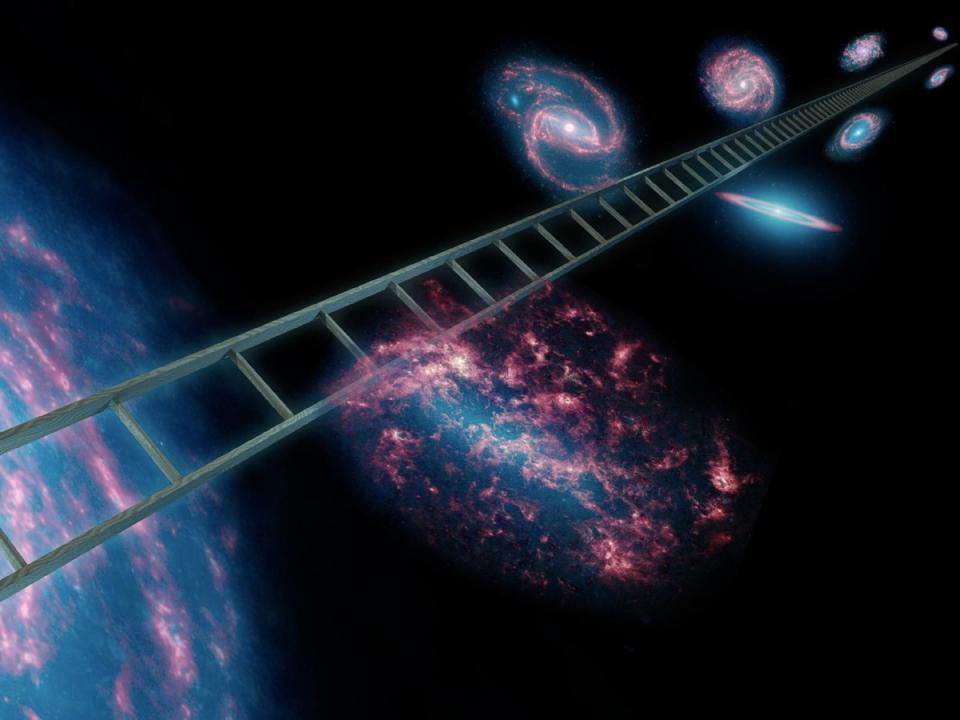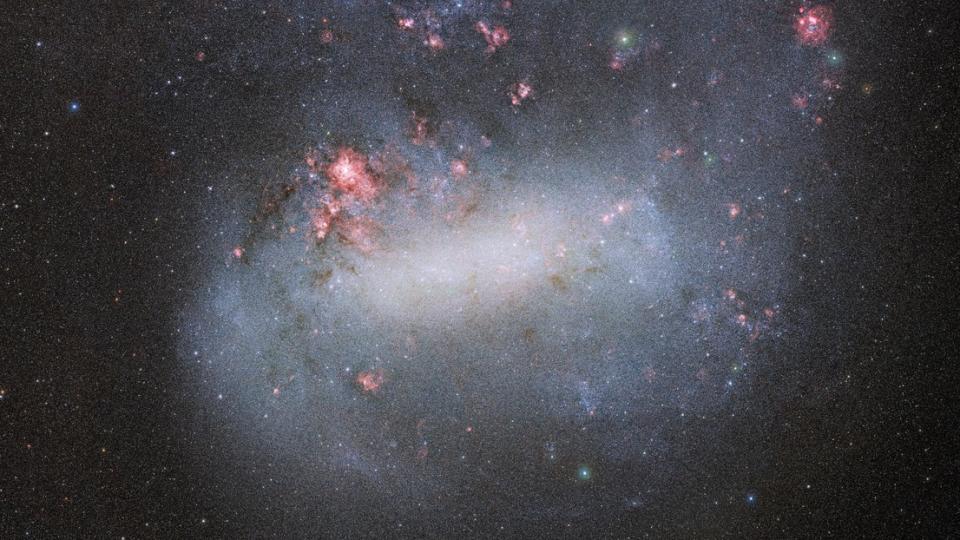In about 5 billion years, the fuel needed for nuclear fusion in the sun’s core will run out. This will cause the inner core to collapse under the force of the sun’s gravity. At this point, the star’s outer layers (where nuclear fusion is still taking place) will expand and it will enter a phase of stellar life called the red giant phase.
This red giant phase will be a sign of destruction for the planets in the solar system, including Earth. Other stars in the universe will suffer the same fate as our sun, meaning that any exoplanets orbiting close to those other stars will also experience such destruction.
Yet astronomers may now have found a way in which the destructive red giant phase of stars can be used constructively.
A team of researchers led by EPFL scientist Richard I. Anderson has suggested that the acoustic oscillations, or ‘singing’, of red giants at different ages could be used to more accurately measure cosmic distances. Just as music is said to calm the wild beast, this heavenly melody could help solve a cruel cosmological problem called ‘Hubble tension’.
Related: James Webb Space Telescope complicates the paradox of the expanding universe by checking out Hubble’s work
“We found that the acoustic oscillations of red giant stars tell us how to best measure cosmic distances using the Tip of the Red Giant Branch method,” Anderson said in a statement.
Anderson refers to the position, or “branch,” that red giants occupy on a map outlining the lives of stars, the Hertzsprung-Russell diagram (HR diagram). The “Tip of the Red Giant Branch (TRGB)” is a critical point where the cores of red giant stars have collapsed and become so dense that they can ignite helium and reverse their brightening.
A new step on the cosmic distance ladder
Astronomers have several ways to measure large cosmological distances; such methods are useful for mapping increasingly large distances. These measurement techniques come together to form the metaphorical rungs of the ‘cosmic distance ladder’, commonly known as the ‘extragalactic distance scale’.
Sport one, if you will, is built using stellar parallax: the change in the apparent positions of distant stars as Earth changes position around the sun. This technique can measure distances that extend just beyond the solar system.
The highest rung on the ladder is studied by analyzing the redshifts of distant galaxies. This technique, on the other hand, can be used to measure distances over billions of light years.
Redshift occurs because as objects race away from us due to the expansion of the universe, the wavelength of the light they emit, which takes billions of years to travel to us, is stretched by this expansion. This extension makes the light red and sometimes even causes it to switch to infrared wavelengths. This is actually why the James Webb Space Telescope (JWST), which is highly sensitive to infrared light, is so adept at observing galaxies in the early universe.
The cosmic distance ladder can help cosmologists measure the rate at which the universe is expanding, a value called the Hubble constant and named in honor of astronomer Edwin Hubble. This is because his observations of distant galaxies were crucial in overturning the idea that the universe is in a steady state and neither growing nor shrinking.
However, there is a fly in this cosmological ointment.
The different measurement techniques of the cosmic distance ladder do not agree with each other on the value of the Hubble constant. This problem has become known as the ‘Hubble tension’ and scientists think adding extra rungs to the cosmic distance ladder could help solve it.

The TRGB can be used as a distance measurement because of the largely uniform light output seen at this point in the evolution of the red giants. This means that red giants at different distances can compare their brightness, allowing a measurement of the distances between them. This makes red giants at the TRGB point of the HR diagram something astronomers call a ‘standard candle’.
Hubble problem solved by stars boiling and bubbling?
To investigate the use of red giants as standard candles, Anderson and team used data from the Optical Gravitational Lensing Experiment (OGLE) and the Gaia mission to study red giants in a satellite galaxy of the Milky Way: the Large Magellanic Cloud (LMC). ).
This resulted in a surprising discovery that TRGB stars vary in brightness periodically. This variation is caused by sound waves traveling through the puffy stars, similar to how earthquakes travel through Earth. Such variations cause the stars to oscillate.


Although astronomers were already aware of these red dwarf oscillations, the influence of these oscillations on brightness and distance measurements had not previously been taken into account.
The oscillations ultimately allowed the team to determine the age of the red giants, which should add nuance to their use as standard candles.
“Younger red giant stars near the TRGB are slightly less bright than their older counterparts, and the acoustic oscillations we observe as brightness fluctuations allow us to understand what type of star we are dealing with,” says Anderson. “The older stars oscillate at a lower frequency – just like a baritone sings with a deeper voice than a tenor!”
Related stories:
– ‘Hubble problems’ could deepen with new measurements of the universe’s expansion
– Can a ‘supervoid’ resolve a brutal debate over the expansion rate of the universe?
– The expansion of the universe could be a mirage, new theoretical research suggests
Because red giants are ubiquitous in galaxies throughout the universe, this development could contribute to more accurate cosmic distance measurements. Could it one day help ease the Hubble strain?
“Now that we can distinguish the ages of the Red Giants that make up the TRGB, we will be able to further improve the measurement of the Hubble constant,” Anderson concluded. “Such improvements will further test Hubble’s constant tension and could lead to groundbreaking new insights into the fundamental physical processes that determine how the universe evolves.”
The team’s research was published March 7 in The Astrophysical Journal Letters.